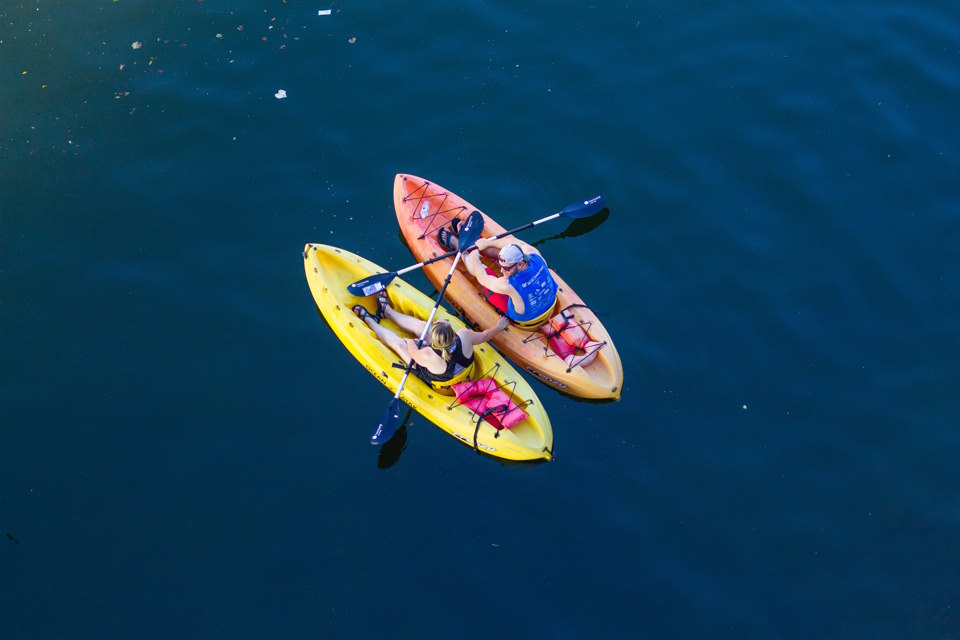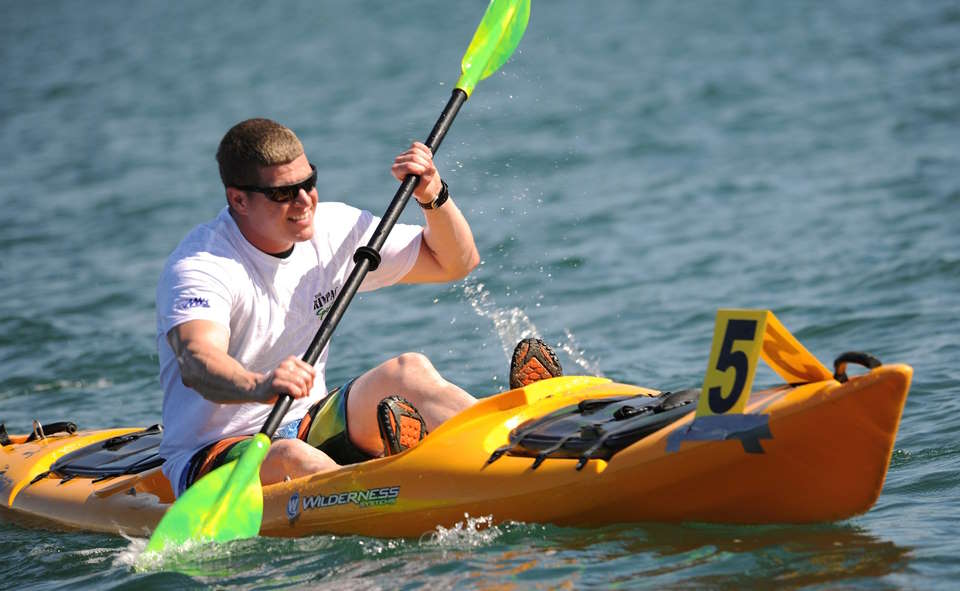If you’re here, you must be curious about the safety aspects of kayaking. Kayaking is an exhilarating outdoor activity that allows you to escape the hustle and bustle of everyday life and explore serene waters. However, like any adventure sport, it’s essential to be aware of the potential risks involved. We will discuss the safety risks of kayaking, including whether kayaks tip over easily and when it’s best to avoid kayaking. Additionally, we will highlight four common mistakes that beginners often make while kayaking. So, if you’re eager to learn more about the safety measures and precautions to take before hitting the water, keep reading!
Introduction
When it comes to outdoor activities, kayaking is a popular choice for many adventure enthusiasts. However, it’s only natural to wonder about the safety of this thrilling water sport. So, is kayaking safe?
Kayaking can be a safe and enjoyable activity as long as certain precautions are taken. Firstly, it is essential to have the right safety gear. A well-fitting personal flotation device (PFD) is a must-have to ensure your safety in case of an accident. Additionally, a helmet is recommended for kayaking in rough waters or rocky areas.
Furthermore, it is crucial to have a good understanding of the water conditions and weather forecast before embarking on a kayaking trip. Checking the tide levels, currents, and wind speed can help avoid potentially dangerous situations. It is important to note that kayaking in extreme weather conditions, such as heavy storms or strong winds, should be avoided for safety reasons.
- Never go kayaking alone: Having a paddling companion not only increases the fun but also provides an added layer of safety. In case of an emergency, having someone by your side can make a significant difference.
- Take a kayaking course: If you are new to kayaking or lack experience, enrolling in a kayaking course can greatly enhance your safety on the water. Learning proper paddling techniques, rescue skills, and understanding navigation can go a long way in ensuring a safe kayaking experience.
- Stay alert and aware: While kayaking, it is essential to remain vigilant and be aware of your surroundings. Keep an eye out for obstacles, such as rocks, tree branches, or other hazards that could pose a risk to your safety. Additionally, regularly checking your equipment and ensuring it is in good condition will help prevent any unexpected failures.
What Are the Safety Risks of Kayaking?
Kayaking is a popular outdoor activity that combines physical exercise with the beauty of nature. It is a great way to explore water bodies such as rivers, lakes, and oceans. However, like any other adventure sport, kayaking also carries certain risks. It is essential for kayakers to be aware of these safety risks and take necessary precautions to ensure a safe and enjoyable experience.
One of the main safety risks of kayaking is capsizing. Kayaks can tip over easily if proper balance and technique are not maintained. This can happen due to factors such as strong currents, large waves, or sudden changes in the weather. If a kayaker is not properly trained or experienced, they may find it challenging to handle these situations, increasing the risk of accidents and injuries. It is important to remember that even the most experienced kayakers can face capsizing and should always be prepared.
Another safety risk of kayaking is hypothermia. Water bodies such as lakes and rivers can be considerably colder than the air, especially in certain seasons or regions. In case of capsizing or prolonged exposure to cold water, kayakers can quickly lose body heat and develop hypothermia. Symptoms of hypothermia include excessive shivering, confusion, and fatigue. To prevent this risk, kayakers should dress appropriately for the water temperature, wear a wetsuit or drysuit, and always carry extra layers of clothing.
The risk of collision with other watercraft or obstacles is also a significant safety concern in kayaking. In popular kayaking areas, there may be a high concentration of other kayakers, canoes, motorboats, or even wildlife. It is important for kayakers to stay alert, maintain a safe distance from other watercraft, and follow any navigational rules in the area. Additionally, kayakers should be cautious of rocks, fallen trees, or any other obstacles in the water that could cause accidents or injuries.
- Always wear a personal flotation device (PFD) or life jacket, regardless of your kayaking experience or swimming ability.
- Learn and practice proper paddling techniques, as well as self-rescue and rescue techniques.
- Inform someone about your kayaking plans, including your intended route and expected return time.
- Check weather conditions and forecasts before heading out, and be prepared to change plans if necessary.
Do Kayaks Tip Over Easily?
Kayaking is an adventurous water sport that offers a thrilling experience to outdoor enthusiasts. Whether you are a beginner or an experienced paddler, one question that often comes to mind is, ‘Do kayaks tip over easily?’ This concern is legitimate, as no one wants to find themselves unexpectedly plummeting into the water. We will delve into the factors that contribute to kayak stability and analyze the risks associated with tipping over.
When it comes to the stability of kayaks, it is essential to understand the different types available. Recreational kayaks, often wider and shorter in design, are generally more stable compared to their sleeker and narrower counterparts, such as touring or sea kayaks. This wider design provides a better balance and makes tipping over less likely, especially for beginners.
Furthermore, the center of gravity plays a crucial role in kayak stability. By keeping your body centered and maintaining a low point of gravity, the chances of tipping over decrease significantly. It is recommended to distribute your weight evenly and be mindful of sudden movements that might disrupt the equilibrium of the kayak.
- Choosing the appropriate kayak for your skill level is vital in preventing tipping incidents. As a novice, it is advisable to opt for a wider and more stable kayak. Gradually, as you gain experience and confidence, you can transition to narrower and faster models.
- Environmental factors also impact the stability of kayaks. Rough water conditions, strong winds, and choppy waves can increase the risk of tipping over. It is crucial to pay attention to weather forecasts and avoid kayaking in unfavorable conditions, especially when you are a beginner.
- Proper technique and paddling skills can greatly reduce the chances of tipping over. Learning how to brace, maintain balance, and execute efficient strokes will enhance your stability on the water. Taking a kayaking course or seeking guidance from experienced paddlers can significantly improve your skills and confidence.
| Factors Affecting Kayak Stability | Risk Mitigation Recommendations |
|---|---|
| Kayak Type: Wider recreational kayaks provide better stability for beginners. | Choose Wisely: Select a kayak suitable for your skill level. |
| Center of Gravity: Maintaining a low point of gravity reduces the risk of tipping over. | Balance & Technique: Keep your body centered and learn proper paddling techniques. |
| Environmental Conditions: Rough waters and adverse weather can increase the likelihood of tipping over. | Stay Aware: Check weather forecasts and avoid kayaking in unfavorable conditions. |
| Seek Guidance: Take a kayaking course or learn from experienced paddlers to improve your skills. |
When Should You Not Kayak?
When it comes to the thrilling water sport of kayaking, there are numerous factors to consider before embarking on an adventure. While the sport offers an exhilarating experience, it is essential to prioritize safety at all times. We will focus on one important aspect of kayaking – knowing when it is advisable not to kayak. By understanding the situations and conditions in which kayaking may not be a suitable option, we can ensure the well-being and enjoyment of this fantastic outdoor activity.
- Unfavorable Weather Conditions: One of the primary reasons why you should not kayak is when the weather conditions are unfavorable. Kayaking in extreme weather can be dangerous and increase the risk of accidents. Strong winds, thunderstorms, heavy rain, and foggy conditions can make it challenging to navigate, maintain control over the kayak, and potentially result in capsizing. Always check the weather forecast before embarking on a kayaking trip and avoid going out if unfavorable conditions are predicted.
- Poor Physical Health: It is essential to assess your physical health before deciding to kayak. If you are dealing with health issues or injuries that could potentially worsen or be exacerbated by physical activities, it is best to avoid kayaking until you have fully recovered. Engaging in strenuous activities like kayaking while injured can not only jeopardize your safety but also hinder your recovery process. Prioritize your well-being and consult with your healthcare provider if you are unsure about kayaking with a particular condition.
- Lack of Experience or Training: Kayaking requires a certain level of skill and knowledge to maneuver the kayak effectively and understand basic safety measures. If you are a beginner and lack experience or proper training in kayaking, it is advisable not to venture out alone or in difficult conditions. Lack of experience can make it difficult to handle unexpected situations and navigate challenging waterways, increasing the risk of accidents. Consider taking kayaking lessons or going with an experienced guide until you feel confident and competent enough to kayak independently.
While kayaking is a fantastic outdoor activity that allows you to connect with nature and enjoy the beauty of the water, it is crucial to be mindful of your own safety. Always assess the weather conditions, your physical health, and your skill level before embarking on a kayaking expedition. Remember, it is better to err on the side of caution rather than putting yourself in harm’s way. By making informed decisions and ensuring that all necessary precautions are in place, you can have a safe and enjoyable kayaking experience.
What Are Four Mistakes in Kayaking?
Kayaking is a popular water sport that offers a thrilling and adventurous experience. Whether you are a beginner or an experienced kayaker, it is important to be aware of the potential mistakes that can occur while out on the water. By understanding these common mistakes, you can take the necessary precautions to ensure a safe and enjoyable kayaking experience.
One of the most common mistakes in kayaking is improper paddling technique. It is essential to have a correct paddle grip and know how to use your core muscles for efficient paddling. Many beginners tend to use their arms and shoulders too much, which can lead to fatigue and pain. By using the proper technique, you can conserve energy and prevent injury.
Another mistake that kayakers often make is not wearing a PFD (personal flotation device) or not wearing it properly. A PFD is a crucial safety measure that can save your life in the event of a capsize or accident. It is important to wear a properly fitting PFD that is approved by the Coast Guard and to secure all straps and buckles to ensure it stays in place during your kayaking excursion.
- Furthermore, many kayakers fail to check the weather and tide conditions before heading out. It is essential to be aware of any changes in weather patterns or tidal movements that could impact your kayaking trip. Sudden storms or strong currents can make kayaking extremely dangerous, so always check the forecast and plan your outing accordingly.
- Lastly, inexperienced kayakers often underestimate their own skill level and attempt to tackle more challenging conditions than they are ready for. It is important to know your limits and gradually progress to more advanced kayaking adventures. Pushing yourself too far too soon can lead to accidents and put yourself at risk. Always start with calm and protected waters and gradually build up your skills and confidence.
In conclusion, kayaking can be a thrilling and rewarding experience, but it’s important to avoid these common mistakes to ensure your safety on the water. Remember to use proper paddling technique, always wear a PFD, check the weather and tide conditions before heading out, and know your own limits. By taking these precautions, you can enjoy a fun and safe kayaking adventure.











